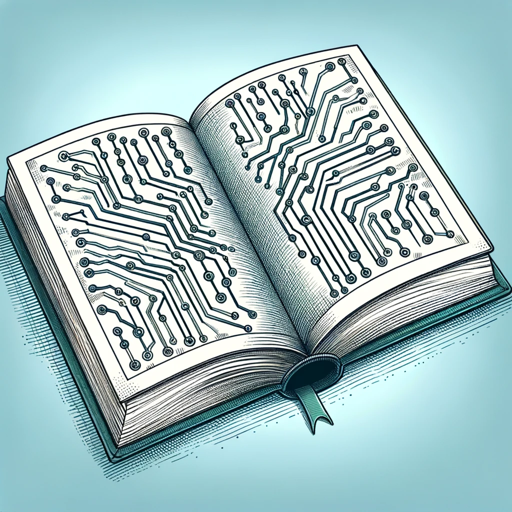Spark: Electrical Engineering Assistant-Electrical Engineering Assistant
AI-powered tool for electrical engineering excellence.
What are NEC considerations for a solar project?
How do I design a microgrid for a commercial building?
What are key aspects of EV charging station design?
Can you explain transmission design for utility-scale projects?
Can you check my single line
Can you check my wiring
Related Tools
Load More
Electric and Electronic Circuits Tutor
Tutor in Electric and Electronic Circuits, detailed and understanding.
Circuit Sage
AI Expert on Electronics and Embedded Systems.

Student - Electrical and Electronics Engineering
Enthusiastically delves into circuit theory, signal processing, and electronics. Spends time in labs testing electrical systems and creating hardware prototypes. Requires updated resources on semiconductor physics, automation systems, and electrical safet

Engineering
Expert in engineering knowledge

⚡️ Circuit Solver Assistant 🛠️
Your go-to AI for electrical engineering! From circuit analysis to power system optimization, get expert help with complex calculations and design! 🔌🤖

EE-GPT
A search engine and troubleshooter for electrical engineers to promote an open-source community. Submit your questions, corrections and feedback to [email protected]
20.0 / 5 (200 votes)
Introduction to Spark: Electrical Engineering Assistant
Spark: Electrical Engineering Assistant is designed to aid professionals in commercial and electric utility power projects by ensuring compliance with safety and efficiency standards. Spark provides insights and guidance on the National Electrical Code (NEC), the National Electrical Safety Code (NESC), and local codes, helping users to navigate complex regulations and design requirements. For example, when planning a new industrial facility, Spark can assist in selecting appropriate conductors, calculating load requirements, and ensuring grounding methods comply with NEC standards.

Main Functions of Spark: Electrical Engineering Assistant
Code Compliance
Example
Ensuring a commercial building's electrical system adheres to NEC standards.
Scenario
A contractor is designing the electrical layout for a new office building. Spark helps verify that all wiring methods, grounding, and circuit protection comply with the latest NEC guidelines, avoiding potential safety issues and ensuring the project passes inspection.
Design Feedback
Example
Providing recommendations for optimizing power distribution in a utility project.
Scenario
An engineer is tasked with upgrading a substation. Spark offers advice on the best practices for transformer placement, conductor sizing, and protection schemes, improving the efficiency and reliability of the power distribution system.
Plan Generation
Example
Creating detailed, code-compliant electrical plans for a commercial project.
Scenario
An architect needs a comprehensive electrical plan for a new shopping mall. Spark generates a plan that includes detailed schematics, load calculations, and compliance notes, ensuring the design meets all regulatory requirements and supports efficient energy use.
Ideal Users of Spark: Electrical Engineering Assistant
Electrical Contractors
Electrical contractors benefit from Spark's detailed code compliance checks and design feedback, helping them to deliver safe and reliable installations that meet regulatory standards. Spark can assist contractors in troubleshooting design issues and ensuring all aspects of the installation are up to code.
Electrical Engineers
Electrical engineers use Spark to optimize their designs for commercial and utility projects. Spark's ability to provide detailed feedback on code compliance and best practices helps engineers create efficient, safe, and compliant electrical systems, reducing the risk of costly redesigns or failures.

How to Use Spark: Electrical Engineering Assistant
1
Visit aichatonline.org for a free trial without login, also no need for ChatGPT Plus.
2
Gather project details including location, type of electrical installation, and any specific requirements or constraints.
3
Input your project information into Spark, specifying any relevant codes or standards (e.g., NEC, NESC, local codes).
4
Review the generated feedback, designs, and code compliance suggestions provided by Spark.
5
Implement the recommended designs and adjustments, ensuring continuous compliance by consulting Spark as needed throughout the project lifecycle.
Try other advanced and practical GPTs
DALL-Max
Create stunning AI images effortlessly.
Devz Project Plan Generator
AI-Powered Project Planning Made Easy

Video Analyzer
AI-powered video transcription analysis.

Top Down Tokens - Aligned Feet
AI-powered character tokens for seamless tabletop gaming.

Podcast Coach Mick by NextGen Podcaster
Elevate your podcast with AI-powered guidance.

Emergenzia NextGen Super-Turbo-AI
AI-Powered Versatility for Every Task

Electrical Engineer GPT
AI-Powered Electrical Engineering Tool

Norma ABNT bot
AI-powered ABNT compliance for your documents

Story Illustrator
AI-Powered Story Illustration

Mission Statement Writer
AI-powered precision for mission statements.

SHORT
AI-powered answers made simple

龙年多风格头像生成器
AI-Powered Lunar Year Avatars

- Academic Research
- Project Design
- Code Compliance
- Efficiency Analysis
- Safety Checks
Frequently Asked Questions about Spark: Electrical Engineering Assistant
What types of projects can Spark assist with?
Spark can assist with a wide range of projects, including commercial electrical installations, utility power projects, residential wiring, and renewable energy system designs. It ensures compliance with relevant codes and standards.
How does Spark help with code compliance?
Spark provides detailed feedback on electrical designs, highlighting areas that need adjustments to meet NEC, NESC, and local codes. It ensures safety and efficiency in your electrical installations.
Can Spark be used for academic purposes?
Yes, Spark is an excellent tool for academic purposes, helping students and researchers understand and apply electrical engineering principles, design projects, and ensure compliance with industry standards.
What are the prerequisites for using Spark?
To use Spark, you need basic project details including the type and location of the installation, relevant codes or standards, and any specific requirements or constraints. No advanced setup or additional software is required.
Is Spark suitable for both beginners and experienced engineers?
Absolutely. Spark is designed to be user-friendly for beginners while providing advanced features and detailed analysis that experienced engineers can leverage for complex projects.